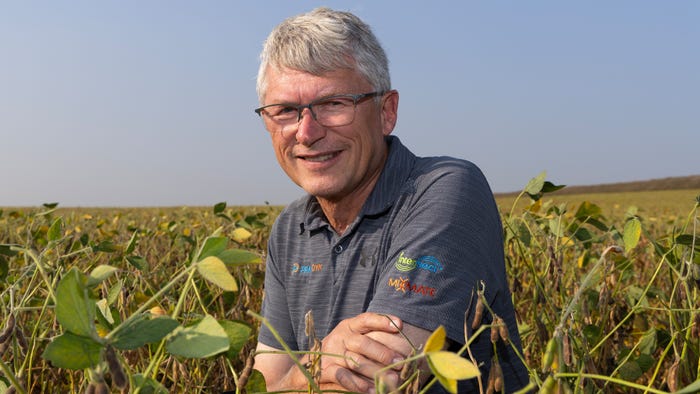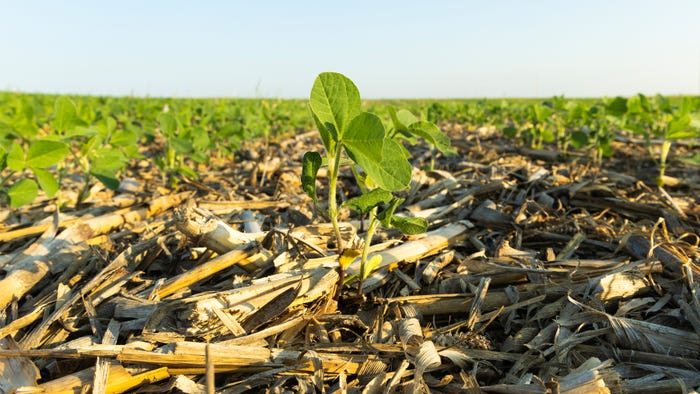
It would have been nice if glaciers several thousand years ago had deposited rocks in an orderly pile at the end of each field.
Unfortunately, it’s backbreaking and time-gobbling efforts of several generations of farmers and their children who created those neat — and at times, not so neat — piles at the ends of fields.
There’s a better way, though, spawned by artificial intelligence.
“One of the areas of technology of interest is drones,” says Brooke Blessington, innovation hub director for Landwerx, a collaboration between Landus and Defensewerx. “Drones scan a field and connect data to monitor field conditions throughout the season. They can be used to determine rock location and sizes before planting.
“Drones can then be used to monitor crops during the growing season to gather information and create treatment plants for precision applications. Emerging technology uses algorithms to point to efficient troughs through the field. This helps optimize operations by reducing labor and other inputs.”
Predicting patterns
“The challenge for farmers is how to tie all that data together and visualize how to use it in day-to-day decisions,” Blessington says, adding that AI and its subsets that include machine learning can help.
Machine learning uses algorithms to predict patterns or develop classifications by forming patterns out of extensive agronomic data. This can speed complex calculations far above what humans can do.
It’s what makes smart spraying systems — which target weeds, not crops — hum, as herbicide is applied across a field. Machine learning takes myriad images of different weeds in different crops in different weather environments sorted out by algorithms to train a sprayer to spray only weeds.
Several of these systems are on the market and include:
See & Spray. John Deere’s Ultimate option targets weeds in standing corn, soybeans and cotton planted in 30-inch rows and wider. The Premium option upgrades to certain existing John Deere sprayers. The Select option targets herbicide application solely on weeds on fallow ground.
One Smart Spray. This technology was created through a joint venture between Bosch and BASF Digital Farming, with integration led by Raven engineers at CNH Industrial. It will be commercially available in Case IH and New Holland Sprayers. One Smart Spray is also collaborating with Agco on Fendt Rogator sprayers.
Selective Spraying. Greeneye Technology’s system is designed to be retrofitted on existing sprayers.
Bilberry. Trimble added this system to its crop protections portfolio that already included the targeted spray system WeedSeeker 2.
Smart spraying system value
Smart spraying systems appeal to Doug Applegate, who farms with wife Kathy and sons Brent and Luke near Avoca, Iowa. The family also owns Praxidyn, a business that manufactures and markets automated chemical mixing systems.
“There is value in this,” he says, “because we can spray weeds specifically and lower chemical applications and cost in a field.”

SPRAYING GETS SMARTER: Doug Applegate sees potential for artificial intelligence used to guide smart spraying systems. However, such systems will require more management, he says.
It can also nix those “dirty” jobs that gobble time and place farmers at more health risk. For example, machine learning that detects isolated weedy spots in fields can nix backpack spraying in favor of drone-applied herbicides, says Pappu Yadav, South Dakota State University precision-ag AI engineering specialist. “Those jobs may be replaced, but for the benefit of the environment and human health.”
The knock against many technologies is that it favors larger farms. But that’s not the case for tasks such as backpack spraying, says Young Chang, SDSU precision-ag automation engineer.
“This kind of AI application can also be beneficial to small- and medium-sized farmers,” Chang says.
AI-based systems require more management. Precision spraying applications become more complicated, due to separate broadcast and spot-spray tanks, Applegate says. “You have to decide which chemicals go in each tank,” he says. “It makes it more difficult for operators to make sure they have the right blends and to measure them correctly if they don’t have an automated mixing system.”
No robots
Farmers won’t have to worry about humanoid robots replacing human brains in making agronomic decisions.
“AI will be a tool for humans to use, rather than supplanting human impact,” Blessington says.
Instead, AI has much potential for better managing data. For example, images of rock locations in a field could be merged with images of nutrient deficiencies, pests and soil water movement that indicates broken tile, she says.
“Machine learning can help better arrange data points and help farmers see patterns more efficiently,” Blessington says. “This can also speed the decision-making process.”

AGRONOMIC AI: Artificial intelligence can help farmers tie together data to make better decisions.
About the Author(s)
You May Also Like






